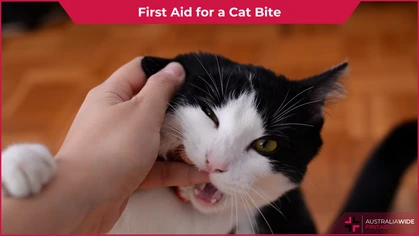Midge Bites & First Aid For Midge Bites

Bites and Stings

The term midge refers to many difference species of tiny flies. Female midges tend to bite, as they need blood to reproduce. It is important to know first aid for midge bites, as they can result allergic reactions
Midges are different species of tiny flies that are often seen in swarms. The male midget does not bite however the female one does because she needs blood to reproduce. Midges alone have almost 200 different species in Australia let alone mosquitoes. The good news is that most of the midges species don’t cause any trouble and only a few of them are a nuisance to us. They are so tiny that they can be compared to a pencil lead. The bad news is that they particularly are hard to control as no chemical is available in Australia and it comes to us that we keep ourselves and our family safe.Where and when are midges found?
Mosquitoes and midges are usually found near water bodies and damp places. Damp places are particularly favorite for female midges to lay eggs like damp soil, muddy vegetated substrates, coastal areas, and marshy regions. Some species tend to move some miles away from their inhabited places while some females might travel many kilometers to find their meals. They mostly like to attack at calm times of the day like dusk or dawn. But they are also active throughout the night.What can midge bites do?
Thankfully midge bites do not transmit dangerous diseases to human beings but they are known to spread some diseases in animals like African horse sickness or ephemeral fever virus. In humans, however, according to your skin & sensitivity, they might cause some allergic reactions like itchiness, redness, or swollenness. Some may even have burning sensations and fluid-filled blisters. Such kind of reaction would have a tiny puncture on the skin. You may find several red dots on your skin. Depending on the person they might go away in days or even weeks. Midge bites may last longer than mosquito bites as they inflict more damage by cutting the skin open with the help of a tiny cutter around their mouth. Mosquitoes use their injection like a mouth to suck the blood directly from under the skin.Rare midge bite reactions
Except for the discussed reactions above one may get additional and rare reactions. Upon recognizing those, make sure that you see the doctor. First, if the swelling and itchiness do not fade after weeks consult your doctor. These symptoms may get severe with the formation of pus on the area or even dizziness, nausea, or headache. If you come across anaphylactic symptoms, contact your doctor immediately. Anaphylactic reactions include difficulty in breathing and talking, swollen tongue, wheezing, or coughing. Keep an eye on children, if they seem pale or limp rush them to the doctor or dial triple zero 000 for an ambulance.How do you get rid of midges & midge bites?
First, make sure that you cover things with water inside your home. Considering the time, it is better to stay indoors at dusk and dawn time, especially avoid marshes and ponds. Insect repellents are effective but keep in mind that they are to be used frequently. Make sure you read the instruction and ingredients when buying insect repellent. Repellents with picaridin or diethyltoluamide (DEET) are proven to be most effective. The amount of picaridin would ensure how long the repellent is going to last, the amount longer it would remain active. Use such products, especially going out. It is not necessary to apply them under the clothes, just on exposed skin. Hence it is better to wear long sleeves and full pants when you leave the house to give a limited amount of skin for midget to attack. Be very careful when applying the fact. Apply on the hands first then on the face making sure to avoid the eyes and mouth. For enclosed spaces like your house, you can also use Citronella candles. Many insects do not like the smell of citronella oil so using these candles inside your home would not only repent away midge but also many other insects. It’s a win-win.How to cure or treat midge bites?
Before talking about how to treat them, it is better to know that you may not see the reaction to the bite immediately, it might show up after a few days. Also, it is noted that most of the natives have developed some kind of immunity toward midge bites, hence these reactions may occur in tourists and travelers. The infection can last longer due to the presence of their slive hence, the first step after recognizing the midge bite is to wash the area with warm water and soap. Antibacterial soap is preferred but you can use any soap. Itchiness can irritate. To soothe itchiness and swelling use a washable clean cloth with cold water and put it on the midget bite for 5 to 10 minutes. You may repeat the process but make sure that you don’t use ice directly on the skin. Antihistamine medications are proven to reduce the allergic reaction from midge bites. If you have scratched them, they might cause a more allergic reaction, so it is better to use an antiseptic cream. But try hard not to scratch the area. If you really feel like doing it, it is probably the best time to trim your nails to make sure you don’t accidentally scratch your skin off. For more information about providing first aid for a Biting midge bite, watch the video below:
Originally published at
https://www.australiawidefirstaid.com.au/resources/midge-bites-first-aid-for-midge-bites
as part of the Australia Wide First Aid Articles Library









